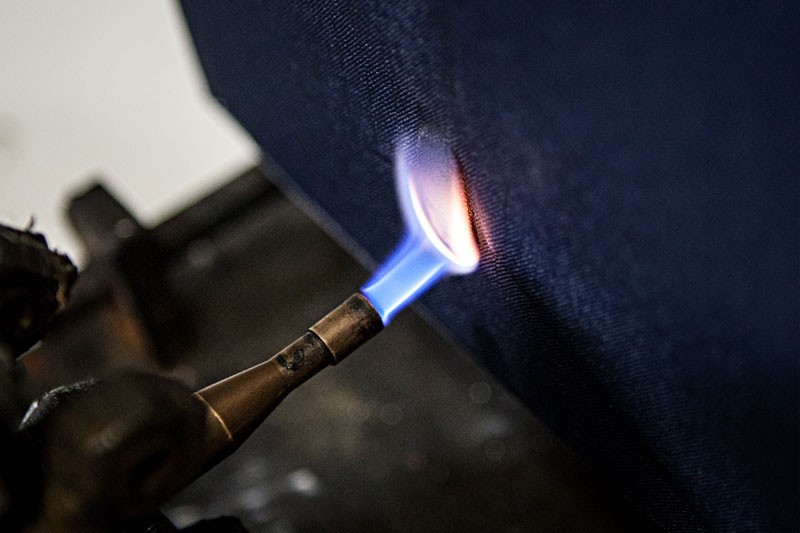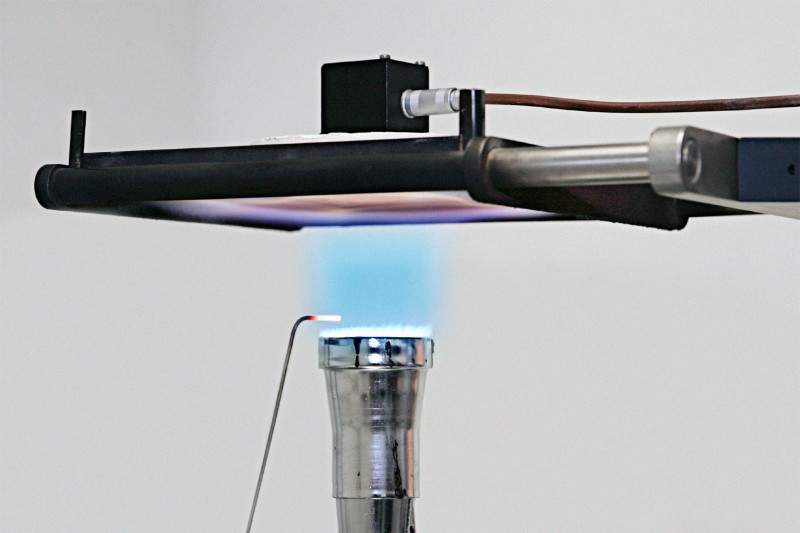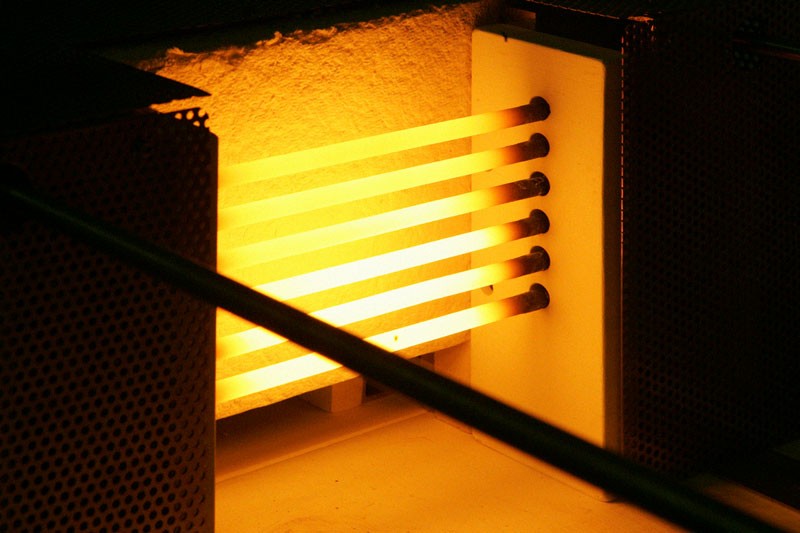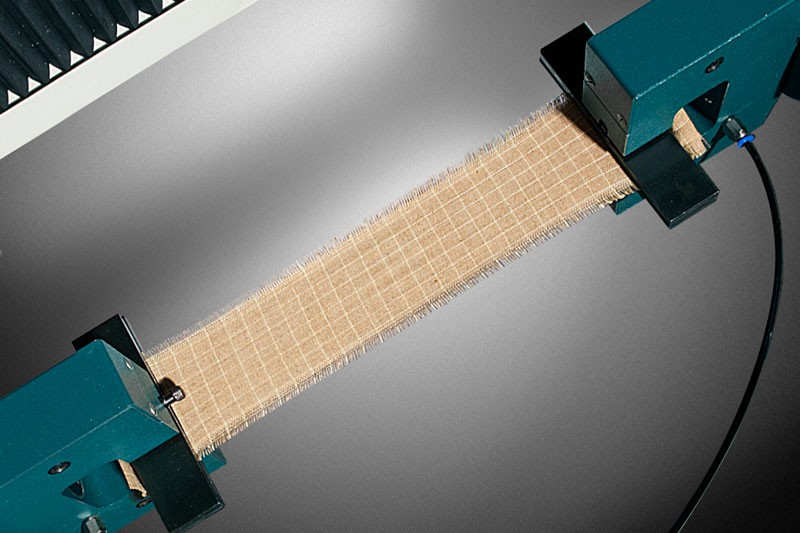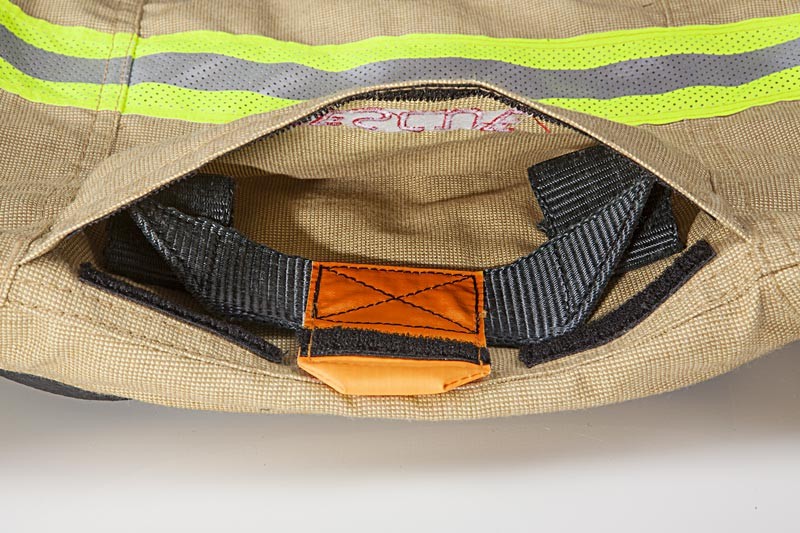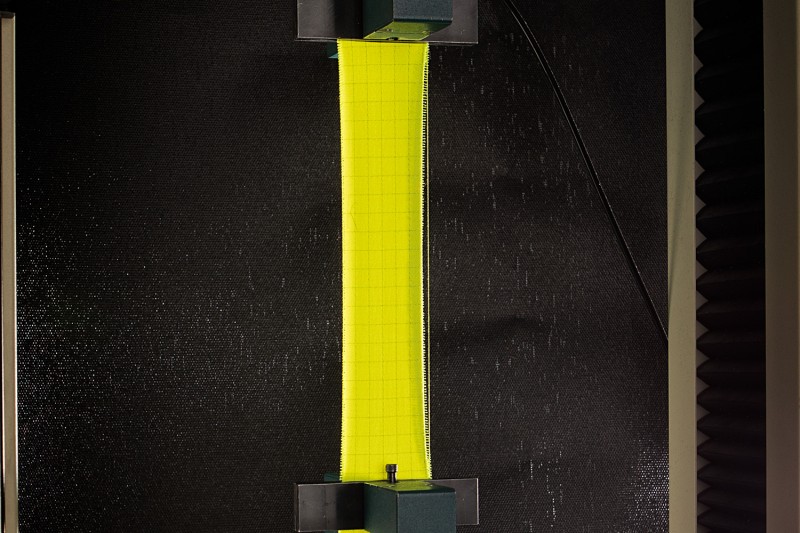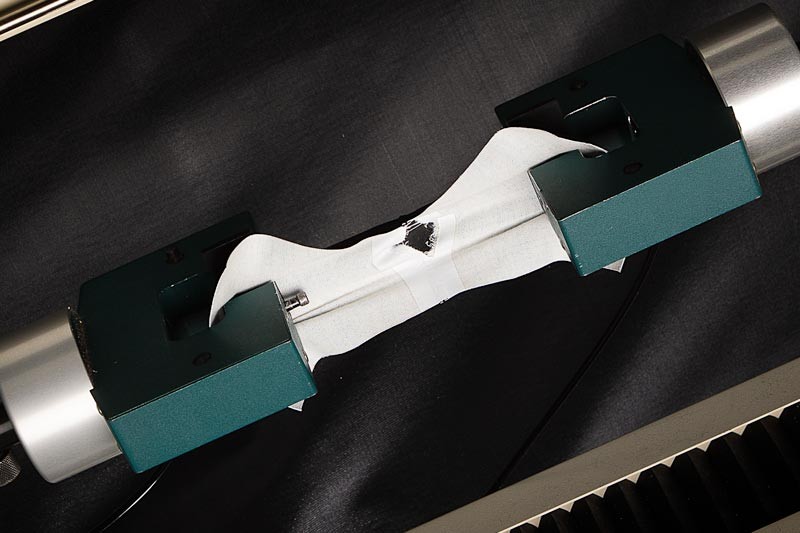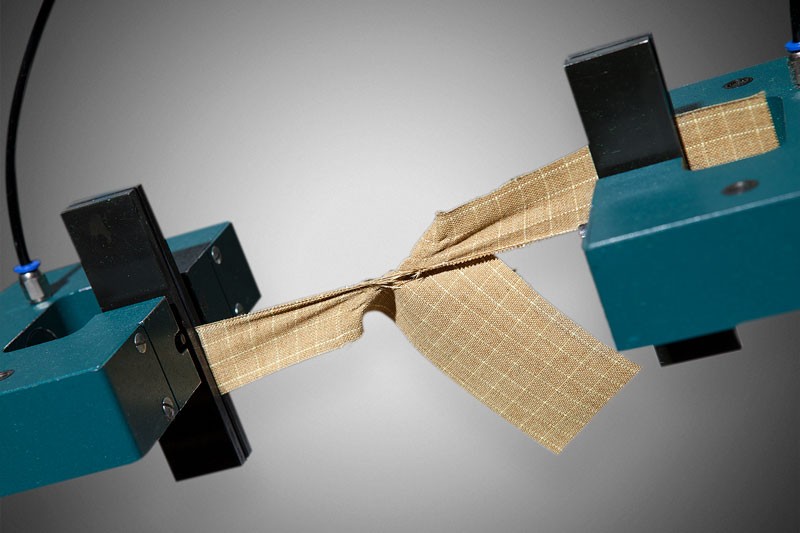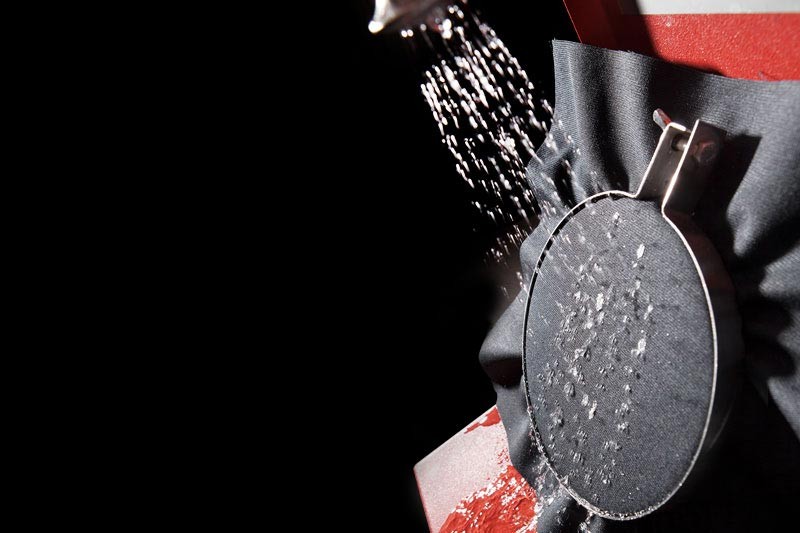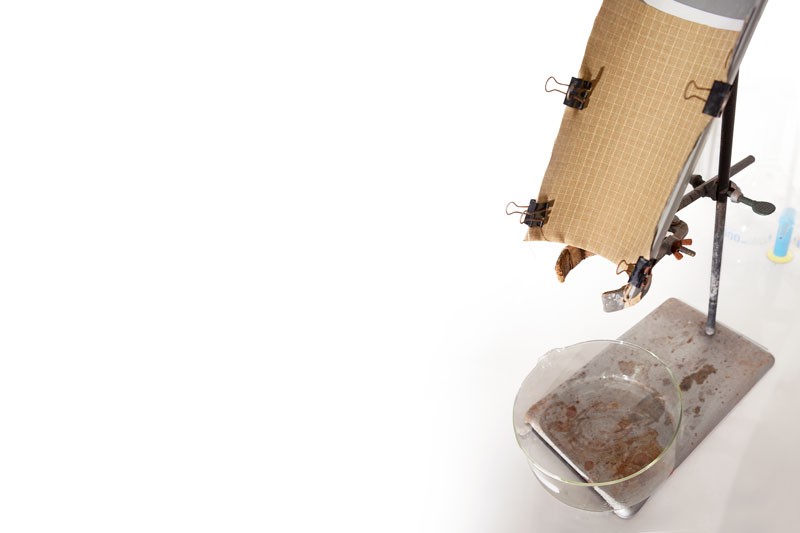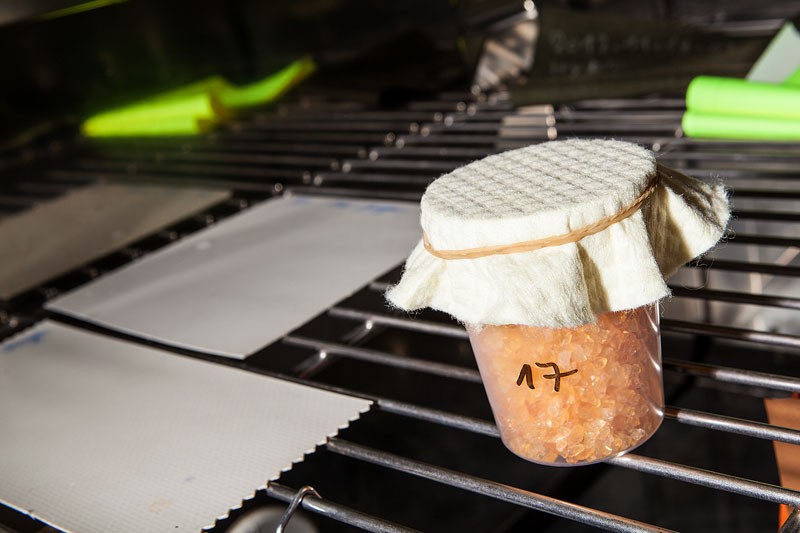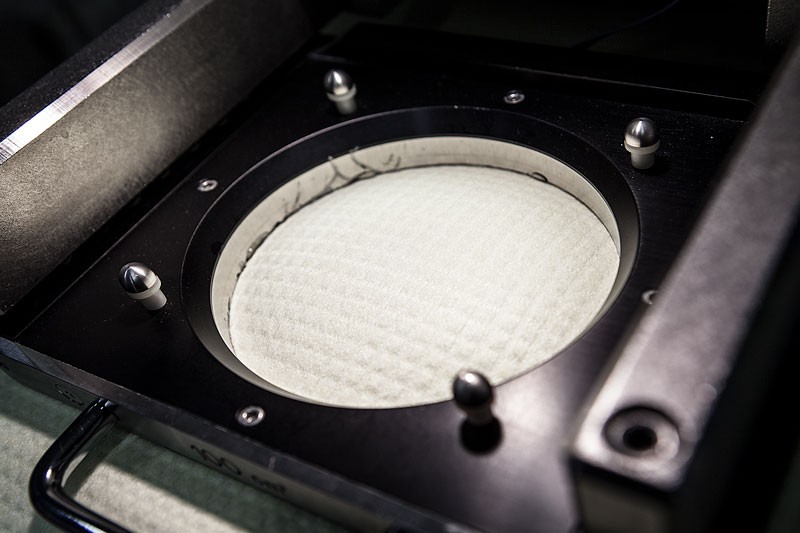Limited flame spread
EN ISO 15025:2002
This test measures the limited spread of flames of vertically oriented textile fabrics (one or several layers), when subjected to a flame.
A defined flame is applied for 10 seconds to the surface of the fabric, whereupon one ascertains:
- whether the flame reaches the edge of the tested fabric
- how long the flame persists
- whether the incandescence spreads
- whether there are burning remains
- whether a hole is formed.


